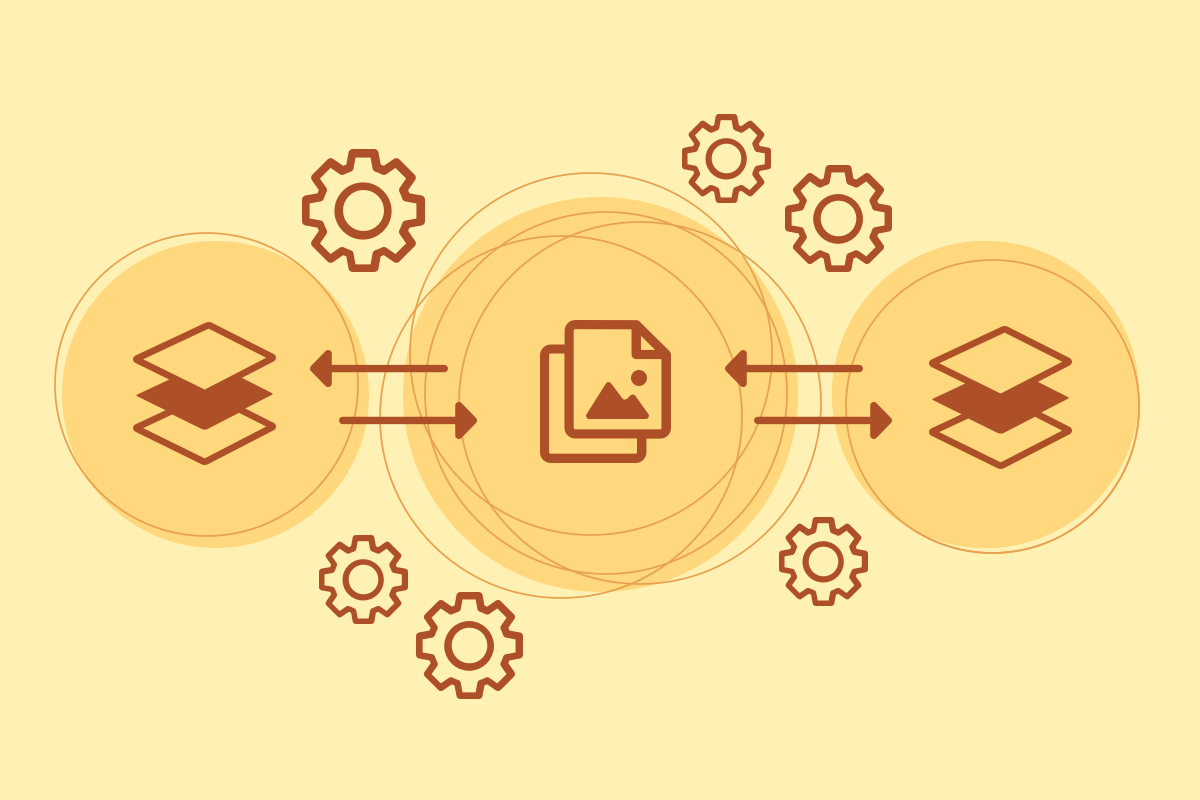Email is an “owned” marketing channel that allows you to have a direct connection with your audience. Unlike social media for example, where the platform you’re on (Facebook, Twitter, LinkedIn, etc) controls how your audience views your content. We should keep this principle in mind when it comes to our email’s content to ensure the tools we use don’t lock us into their platforms and we “own” our assets.
How assets get tied to a platform
Here’s an example of how your images can get tied to a tool/platform: Many email providers host your email’s images for you. This makes it easy to upload your images, and they generate a place for them on the web. However, this means that they host your images and usually generate image URL’s with their domain. So when you want to switch email providers, all the image URL’s used in your emails will go away as soon as you cancel your account with them, breaking all previous emails that you’ve sent out!
Keeping things separated
Image hosting is something we kept in mind with our integrations feature in Blocks Edit. We made it so while building an email, you are able to upload your images as you would expect, but with the added option of connecting to your own hosting via an FTP/sFTP or an Amazon S3 connection. This allows generating image URL’s using your domain. So you can switch your email provider, and even your hosting provider, while still holding on to the URL for your email’s images. Like a website, where you always want to point people to your domain, a domain should always be used as a permanent location for your email’s images as well.
"Like a website, where you always want to point people to your domain, a domain should always be used as a permanent location for your email’s images as well."
A custom workflow
We recently put this approach to the test ourselves, when we decided to move our newsletter to a new email provider. We had hosted images on our servers from the beginning and pointed all URL’s to our domain. And we also used our own HTML for content, building each email with the Blocks Edit editor. With this setup, the migration took just a couple of hours to transfer over our subscribers list. The rest of our workflow remained the same as before, made up of: a hosting provider for images, a content editor for producing emails, and an email provider to send out with.
When deciding on your email marketing’s workflow and tools, an end-to-end platform usually isn’t the right approach. You’re better off building your own workflow made up of specialized tools. For an email’s content, look for tools that allow importing and exporting standard HTML for your email, and which allow hosted images using your domain. That’s how you’re able to own and control your email’s assets.
Maintain control over your email's assets with Blocks Edit, a platform-agnostic visual editor. Connect directly to your image sources using our integrations.


